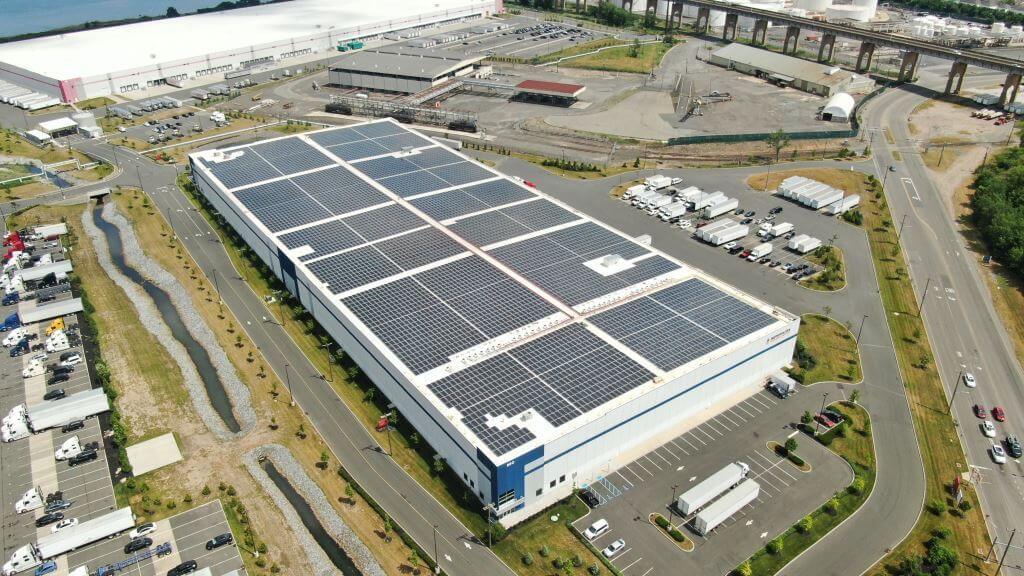Community solar panels installed in Perth Amboy. Photo courtesy of Solar Landscape.
New Jersey Has the Power to Deliver on Solar
New Jersey is a national leader in installed solar energy. Our state has more installed solar capacity per square mile than any other state in the U.S. New Jersey currently generates over 3.7 gigawatts (GW) of power from a mix of solar installations including over 148,000 individual homes. Governor Murphy has set a statewide goal of 32 GW of solar capacity by 2050.
The way we attain that target is important, as it can affect the price of electricity, land use, and the availability of solar for people in environmentally overburdened communities. The number and configuration of solar installations is highly affected by government legislation, regulation and incentive programs.
The New Jersey Chapter has historically supported the institution of net metering standards. In general, these are regulations that make it possible for customers to sell their energy back to the grid at a “reasonable” or market price. Our state is now considered to have one of the most favorable net metering standards in the country. In order to promote solar power, New Jersey also offers various incentives for both home and industrial-level solar power generation. A solar incentive program approved by the New Jersey Board of Public Utilities in 2021 is expected to double the state’s solar generation capacity by 2026.
Community Solar – Solar Energy for All
The New Jersey Chapter is promoting community solar programs that help ensure clean solar energy is available to everyone, even those who can’t afford panels or don’t own their own homes. Community solar is a model for solar energy that allows anyone who pays an electric bill to get their power from solar energy – even if they don’t have solar panels.
In 2019, New Jersey established a successful pilot program for the production of community solar power. The Sierra Club and other environmental groups successfully lobbied that a portion (over 50%) of the solar capacity be allocated to low to moderate income (LMI) households. We also pushed for priority to be given to solar arrays located on rooftops, brownfields or landfills – another recommendation that became part of the program. As a result, our state currently leads the nation in planned capacity of community solar serving LMI households.
For more information about community solar, read our Community Solar Report.
Is Community Solar Available to You?
The number of community solar installations in New Jersey is growing. Sustainable Jersey is working to create a webpage that will simplify the process of locating a community solar supplier. Residents will be able to enter a zip code and find out who to contact. The website should be ready by mid-2022, just when many of the new projects will come online.
If community solar is not available in your area yet, don’t be discouraged. The program is growing quickly.
If you have questions about solar energy in New Jersey, or want to join us in getting the word out, feel free to contact our Home Solar Issues Coordinator azas786@yahoo.com .
More Information
Community Solar Report – a report from the NJ Chapter’s Home Solar Issues Coordinator, March 2022
NJ DEP Webpage on solar power in New Jersey https://www.nj.gov/dep/aqes/opea-solar.html
Solar Energy Industries Association facts on New Jersey Solar https://www.seia.org/state-solar-policy/new-jersey-solar
Info about community solar from PSE&G
Solar Landscape is one of the larger community solar developers in NJ and has a lot of helpful information for customers http://www.solarlandscape.com/subscriber
The NJBPU website has details about solar developers and site locations NJCleanEnergy.com/COMMUNITYSOLAR
Solar Renewable Energy Credits, explained https://news.energysage.com/srecs-complete-overview/
Position on Mid-Scale Solar Power Production
The New Jersey Sierra Club would prefer solar on rooftops, parking lots, brownfields, etc. As with housing, mid-scale, for-profit solar installations on farmland should be clustered on no more than 10-15% of the total area.
